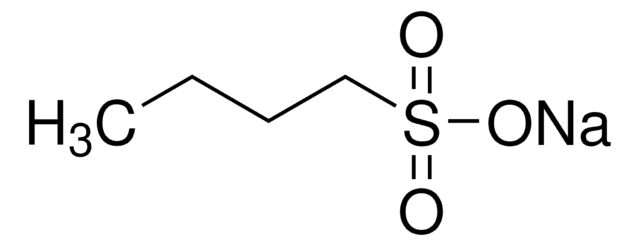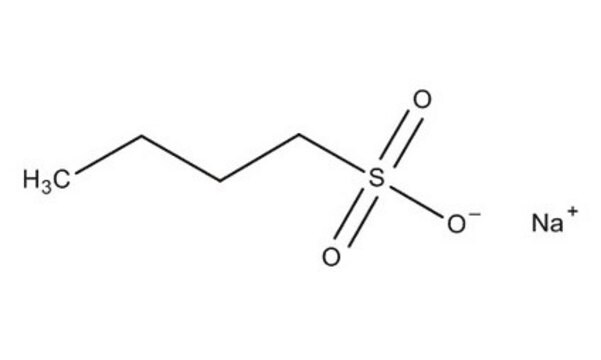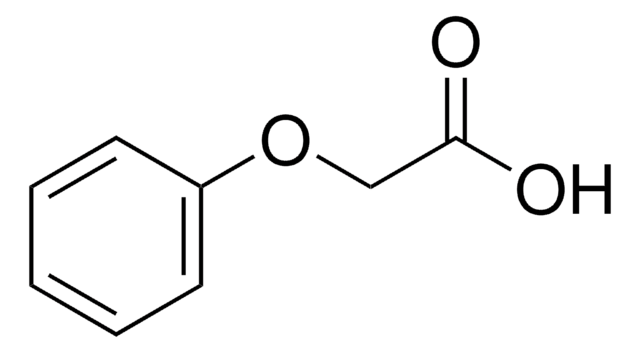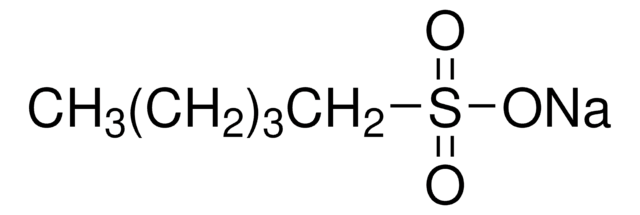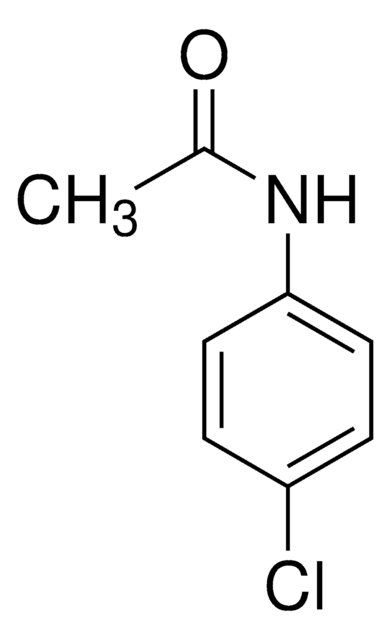모든 사진(1)
About This Item
Linear Formula:
CH3(CH2)3SO3Na
CAS Number:
Molecular Weight:
160.17
Beilstein:
3716662
EC Number:
MDL number:
UNSPSC 코드:
12352100
PubChem Substance ID:
NACRES:
NA.22
추천 제품
애플리케이션
Sodium 1-butanesulfonate was used in the synthesis of high silicon content SAPO4-5. It was also used as a mobile phase to separate eight selenium compounds (selenite, selenate, selenocystine, selenourea, selenomethionine, selenoethionine, selenocystamine and trimethylselenonium ion).
Storage Class Code
11 - Combustible Solids
WGK
WGK 3
Flash Point (°F)
Not applicable
Flash Point (°C)
Not applicable
개인 보호 장비
Eyeshields, Gloves, type N95 (US)
이미 열람한 고객
J Zheng et al.
Journal of chromatography. A, 874(1), 55-64 (2000-04-18)
For selenium speciation analysis, the hyphenation of chromatographic separation with element-specific detection has proved a useful technique. A powerful separation system, which is capable of resolving several biologically and environmentally important selenium compounds in a single column, is greatly needed.
Xue S Han et al.
Chemical communications (Cambridge, England), (2)(2), 166-167 (2002-07-18)
High silicon content SAPO(4)-5 (up to 0.511 atoms per unit cell) has been synthesised, using sodium 3-bromopropanesulfonate, sodium 1-butanesulfonate, sodium naphthalene-1-sulfonate or sodium n-decyl sulfate as surfactants; the SiO2 in the reaction gels ranged up to 3.0 (molar ratio), silicon
M T Vincenzini et al.
Life sciences, 31(5), 463-470 (1982-08-02)
The effect of 1-butanesulfonic acid sodium salt and sodium dodecyl sulfate on the activity of highly purified and crystalline enzymes with marked differences in structure and function has been studied. The enzymes were: alcohol dehydrogenase; lactate dehydrogenase; malate dehydrogenase; isocitrate
Tomohiro Narukawa et al.
Analytical sciences : the international journal of the Japan Society for Analytical Chemistry, 31(6), 521-527 (2015-06-13)
New measurement conditions for arsenic speciation analysis of rice flour were developed using HPLC-ICP-MS equipped with a reversed phase ODS column. Eight arsenic species, namely, arsenite [As(III)], arsenate [As(V)], monomethylarsonic acid (MMAA), dimethylarsinic acid (DMAA), trimethylarsine oxide (TMAO), tetramethylarsonium (TeMA)
Serena Indelicato et al.
Journal of mass spectrometry : JMS, 48(3), 379-383 (2013-03-16)
The characteristic collision energy (CCE) to obtain 50% fragmentation of positively and negatively single charged noncovalent clusters has been measured. CCE was found to increase linearly with the degrees of freedom (DoF) of the precursor ion, analogously to that observed
자사의 과학자팀은 생명 과학, 재료 과학, 화학 합성, 크로마토그래피, 분석 및 기타 많은 영역을 포함한 모든 과학 분야에 경험이 있습니다..
고객지원팀으로 연락바랍니다.